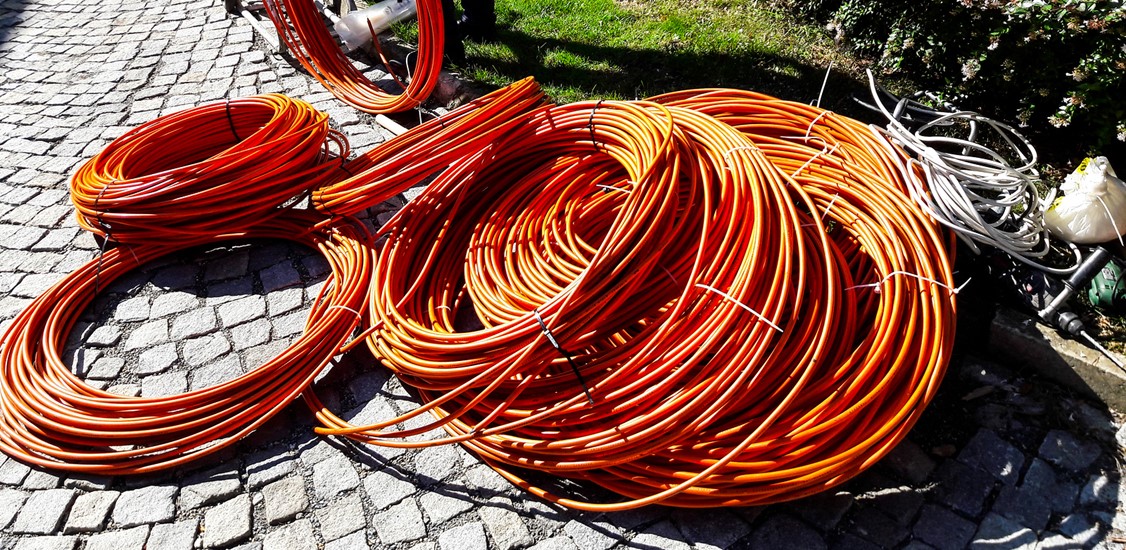We heard this phrase in the broadband community a lot in 2021: bridging the digital divide. With President Biden’s Infrastructure Bill shining a national spotlight on the issue by earmarking $65 billion for broadband upgrades, the COVID-19 pandemic bringing broadband access to the forefront of the work-from-home conversation, and RDOF funding aiding the effort to connect more homes, the topic of access to high-speed internet is more prominent than ever before.
This hot topic won’t lose steam in 2022 thanks to new rounds of RDOF funds being awarded, emerging details about the infrastructure bill’s impacts and many Americans still determining the best ways to get reliable access to accommodate new hybrid working structures. The real question at hand is, how can we seize this moment of national interest and need and begin enacting the impactful measures necessary?
#1: The Evolution of "Rural Access"
Much of what we’ve heard regarding the digital divide in the last few years is that it’s crucial to support communities in adopting new ways of working and learning from home. According to Statista’s analysis of post-pandemic hybrid work changes, two-thirds of leaders say their company is examining how to redesign their workplace to accommodate hybrid work, and 73% of employees expressed interest in flexible remote work options well past 2021. These trends were already visible pre-2020, but the pandemic certainly accelerated them.
In reality, this shift to hybrid work is only half the connectivity story. Many rural communities, especially agricultural areas, are ramping up their use of technology to revolutionize their farming and ranching practices. The economic vitality of rural communities is dependent upon reliable and competitive broadband services, so connectivity is of utmost importance well beyond powering a simple laptop or Zoom meeting for the original "work from home” crowd. However, satellite and wireless connections simply can’t deliver enough bandwidth .
Farming and ranching utilize incredibly sophisticated GPS mapping of crops and herds, and tractors and combines are equipped with cutting-edge technology that must be uploaded and downloaded frequently. The practices of using GPS systems, soil mapping, scouting fields or keeping an eye on livestock with drones are all components of precision agriculture. According to the USDA’s Farm Computer Usage and Internet Report, which began tracking precision agriculture usage in 2021, 25% of farmers reported using precision agriculture approaches. The same report shows that about half of farms are using the internet to conduct business. It also found that as of August 2021, 18% of farms in the United States have no internet access, putting them at a significant disadvantage.
As a general statement, rural Americans, whose homes reach the far-flung corners of the nation, require broadband to access information, opportunities and goods and services perhaps even more than urban dwellers. Home internet access is the only option when the local library or shopping center can be a two-hour drive away. Progress has been made since the FCC first started reporting on rural broadband access in 2011, but in comparison to their urban neighbors, rural communities still show substantial need. According to the FCC’s 2021 Broadband Deployment Report, a little over 17% of rural Americans and nearly 21% on tribal lands live in areas without access to upload/download speeds of at least 25 Mbps, compared to only 1.2% of urban Americans.
#2: Rural Communities Will Have to Rely on a Mix of Legislation and Funding
Realistically in 2022, what will help close the gap between the rural and urban statistics? Up to this point, a mix of legislation that’s allowed communities to take their fiber builds into their own hands and funding from an assortment of government entities, including the FCC, USDA, NTIA and more, have provided opportunity to deliver enhanced connectivity. Perhaps most important of these is the Rural Digital Opportunity Fund (RDOF).
First unveiled in 2019, RDOF is a $20.4 billion initiative by the FCC to help bridge the digital divide. In December 2020, thefirst round of funding totaling $9.2 billion was approved to improve high-speed internet service to more than 5.2 million underserved homes and businesses across 49 states. The funding for the 180 winning bidders will be distributed over the next 10 years. Phase 1 of the RDOF funding roll-out was just the beginning. Phase 2 of RDOF will award another $11.2 billion in funding to create better networks and services.
Previous impactful funding opportunities that fall under various programs within the Universal Service Fund, developed by the FCC to aid the completion of broadband networks, include the Connect America Fund, LifeLine Program, Rural Health Care Program and E-Rate, which have ushered in access that previously would’ve been unattainable. Although some of that funding, like the Connect America Fund, will not be available moving forward, taking full advantage of any and all funding opportunities that do present themselves is the first key to truly closing the digital divide in 2022.
Additionally, state-level grants and programs are a critical component to accessing the capital needed to build networks in areas that were previously economically infeasible for service providers to consider.
#3: State Level Programs Need to Consider Best Practices
According to a 2020 report from Pew Trusts, called "How States Are Expanding Broadband Access," nearly all states have programs in place to address broadband concerns, but the programs, phases the programs are in and levels of resources available vary location-to-location. For example, Minnesota, Colorado and others have broadband offices that were established through a statute or executive order. In other states, such as Tennessee, agencies are formed to address the issue. These programs and groups report into a wide range of government entities, such as economic development offices, public service commissions or the office of the governor. Despite differences in funding, set-up and time they’ve been established, the most successful of these groups have several things in common, according to Pew Trusts: they employ practices for stakeholder outreach, policy framework, planning and capacity building, funding and operations, and program evaluation and evolution. State programs will need to continue to evolve to consider all of these best practices so that individual programs are pushing ahead for all at the same success rate.
#4: Local Communities Need to Partner with the Experts to Solve Mapping and Logistical Concerns
As discussed, securing funding is a large focus that ultimately moves the needle for these groups. Therefore, RDOF and state-level grants are keys to funding these builds, but simply giving communities dollars is only a partial solution. As the Pew Trusts research states, effective planning and capacity building is also key, however, many rural communities don't have local telecom experts with the time and know-how to identify appropriate funding and technology.
Many rural communities simply don’t know how to tackle projects as complex as broadband infrastructure, let alone maximize the reach and efficiency of a broadband network. Beyond that, local communities often struggle with service delivery. Infrastructure is one thing, then you need to deliver a simple, affordable internet service to homes and businesses. It takes time, staffing and resources. This is an important key to seeing real strides in bridging the digital divide in 2022: matching communities with a reliable and experienced telecom infrastructure partner.
Communities can take advantage of sophisticated mapping and lean on innovative engineers to find the best possible cost per passing to bring broadband to more rural customers - a specialty not often possessed by government entities aiding with the solutions as stakeholders or partners in state-level broadband programs. In the continual fight for better access, finding ways to get the right boots on the ground to assess states’ unique needs and situations. With engineers pushing to see how far they can stretch their builds to bring in the most fiber passings possible at an economically feasible level, towns will start to realize impactful solutions.
Conclusion
The key to truly making progress in closing the rural digital divide in 2022 relies on engineers with boots on the ground, mapping, and technological expertise to devise and implement plans. Providers will need to go beyond "stop gap solutions" to find cost-effective ways to build fiber networks today and long into the future. Overcoming the long-existing challenges, finding potential funding opportunities, and evolution of state-level programs will be trending topics in 2022, hopefully leading us on a path to bridging the digital divide in rural communities once and for all.






















